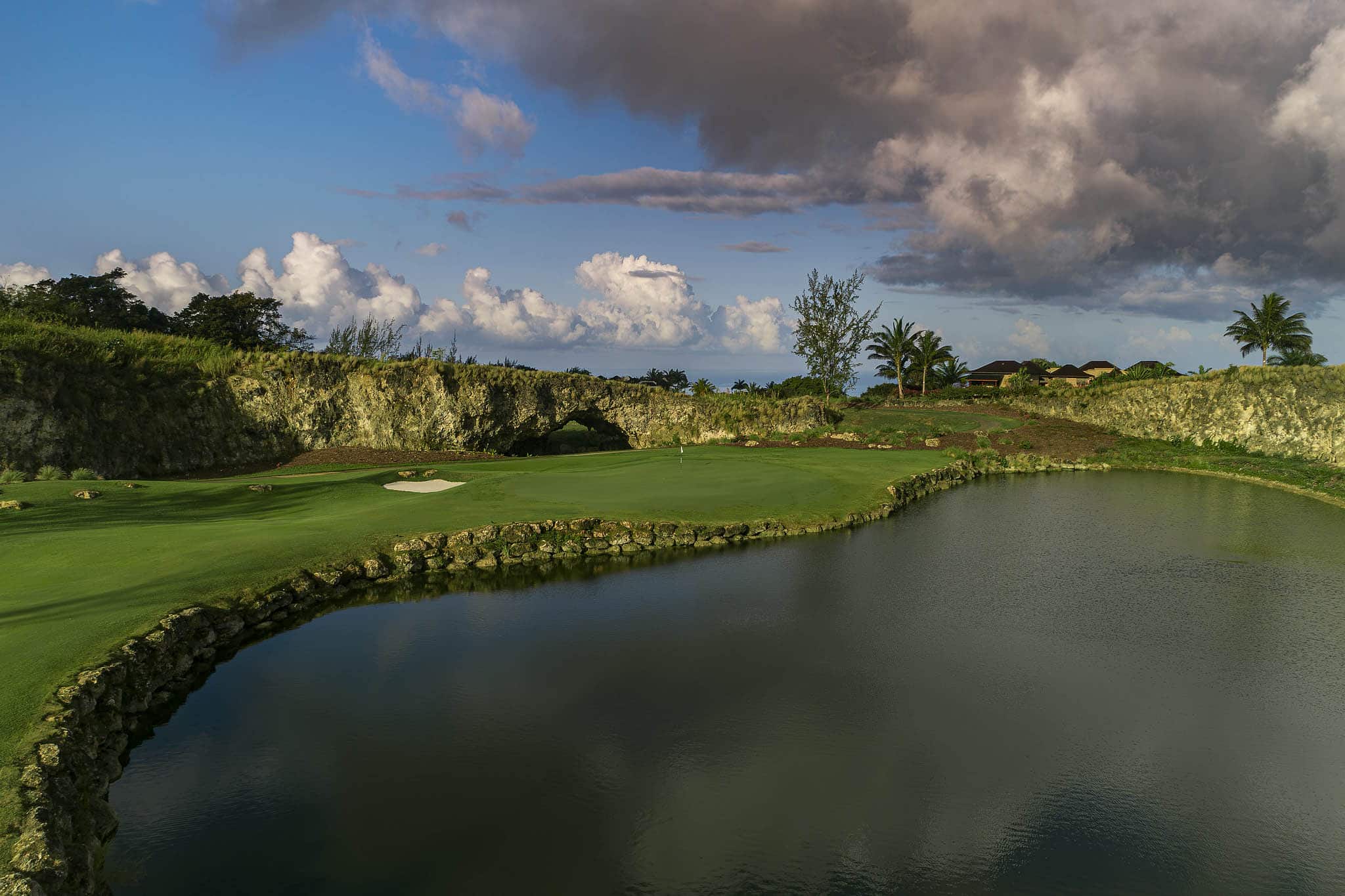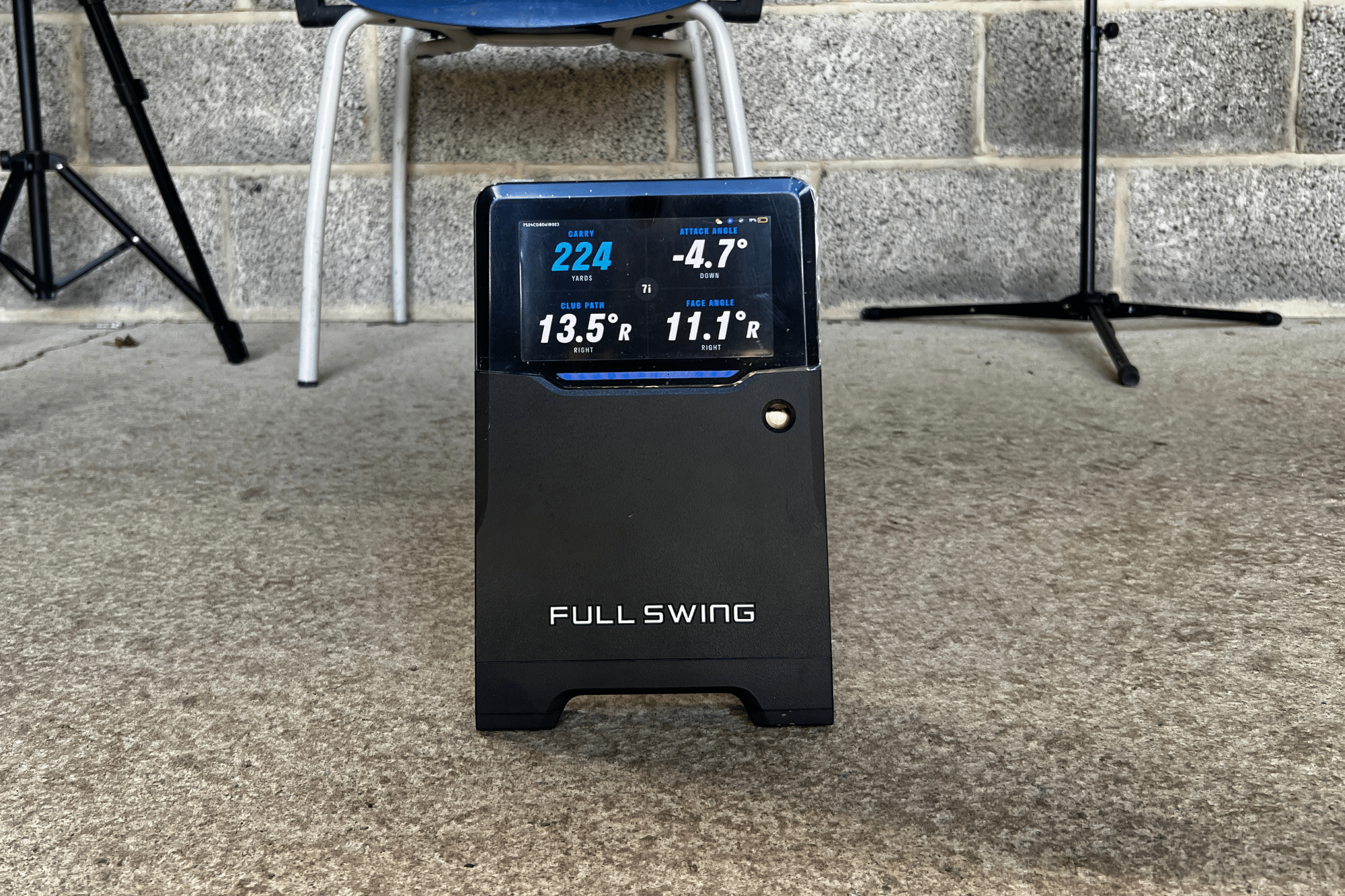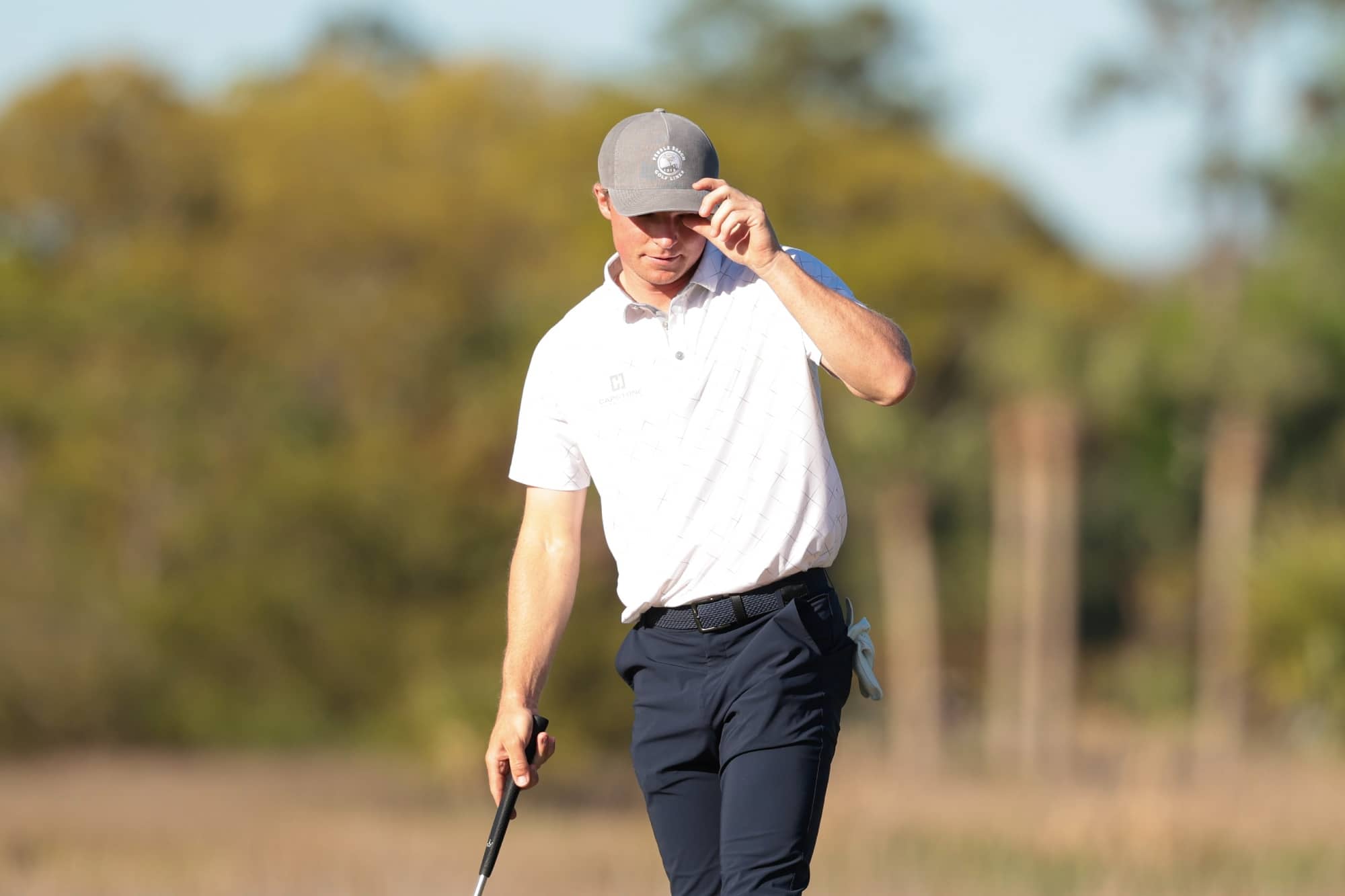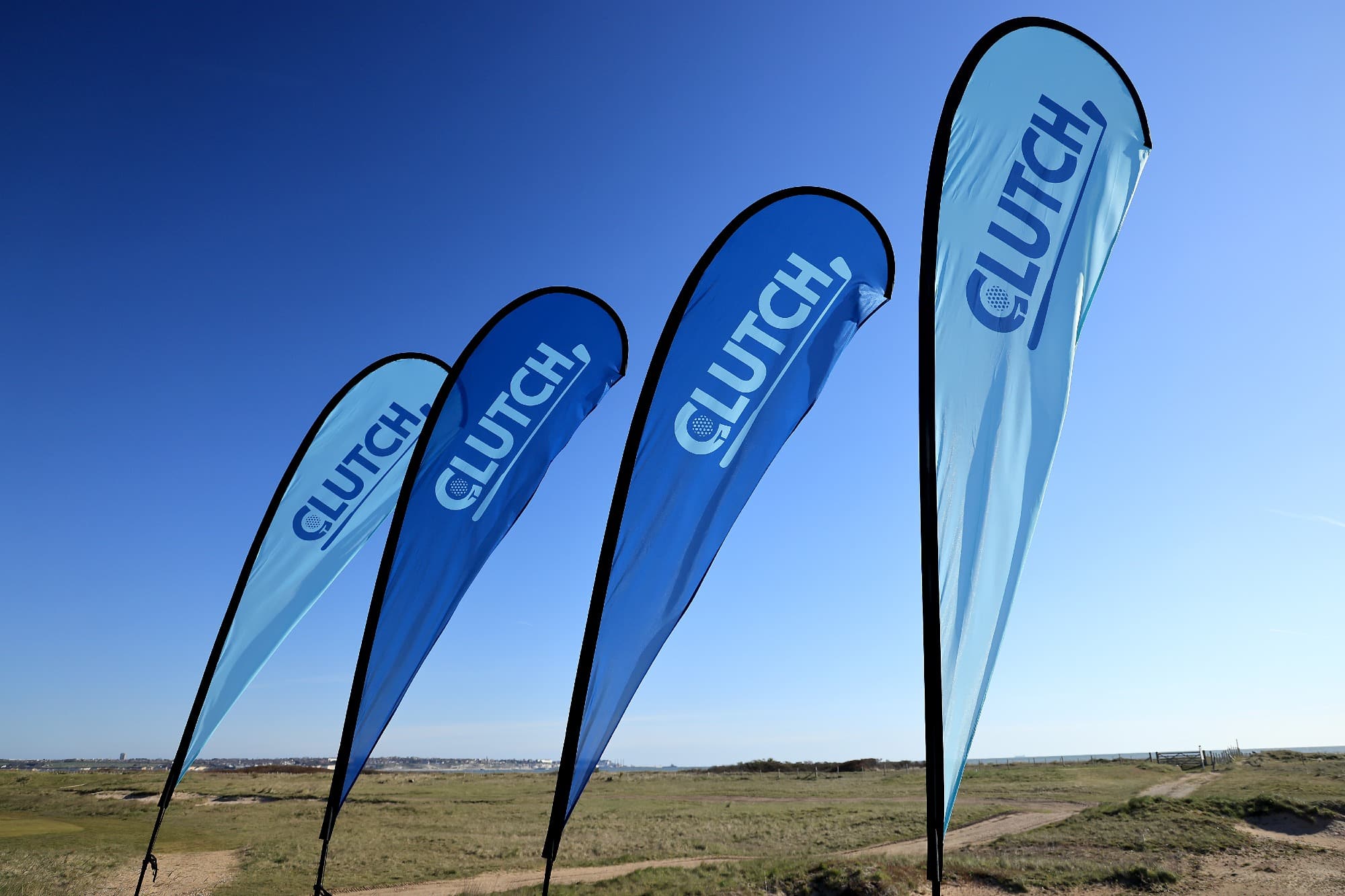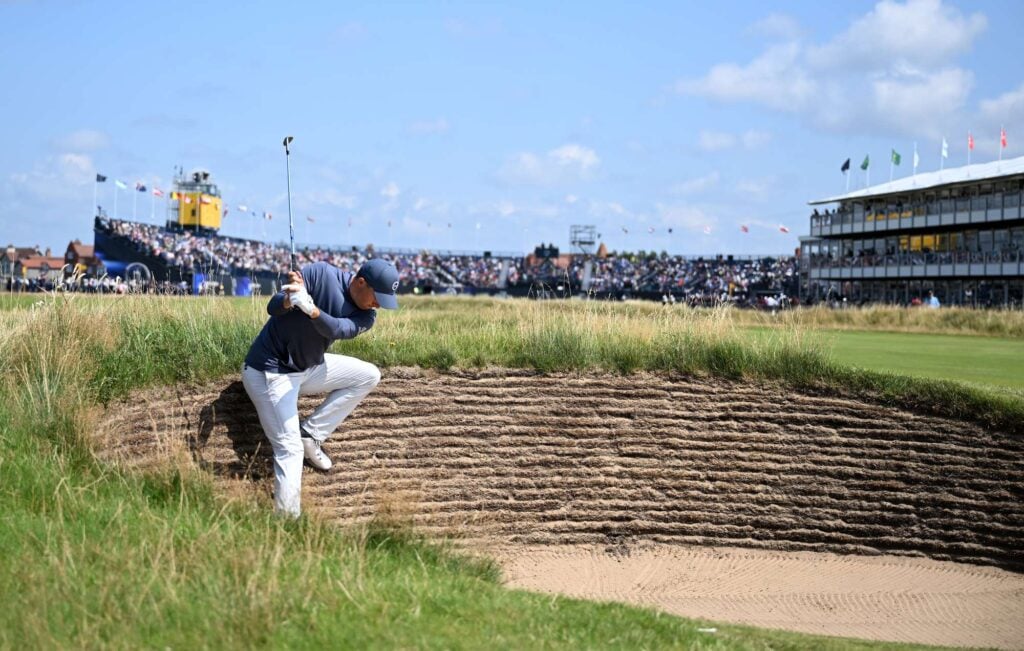
Hoylake’s ‘brutal bunkers’ are the stars of The Open – and we love it!
‘You can get lucky or get unlucky’, said Bob MacIntyre. The sand at Royal Liverpool is striking fear in the hearts of those hunting the Claret Jug
Tony Finau used a putter to lay up. Justin Thomas was so spooked on a greenside approach he fanned it right into the bottom of a revetted monster.
Lucas Herbert’s ball popped out, and then rolled right back in. Taichi Kho’s day ended with four shots on 18 – two of which were played backwards.
The Hoylake bunkers were the stars of The Open’s opening round, and wasn’t it fantastic? They are a proper hazard.
None of this fluffy lie and take out a fairway wood stuff you might see on tour. Find one and you cross your fingers and pray. Disaster lurks in every plot of sand.
“They’re brutal bunkers,” said Bob MacIntyre, a player who surely knows a thing or two about how to successfully escape from a links trap. “You can get lucky or get unlucky, and I got unlucky.”
What’s the problem? Whether they’re huge sandscrapes, or nasty little pots that swallow up your shot, none of these are unfamiliar to Opens past.
But they’ve got right into the players heads. Scottie Scheffler – that’s World No. 1 Scheffler – said pre-tournament they were his biggest danger.
Even he may have under-estimated just how difficult they would prove, and how much fear they would provoke, when competitive action got under way.
“You stand on every tee and almost every bunker is in play,” said Shane Lowry after his one-over 72.
“You’re standing there and you’re kind of trying to figure out what to do because if you lay back, long way in, it’s quite tricky, and you’re just playing for pars.
“If you take it on and hit a bad shot and end up in a bunker it’s a penalty shot, basically. It does ask a lot of questions, this golf course, but it’s the most well-bunkered golf course that we play. They’re everywhere, and they’re very penal.”
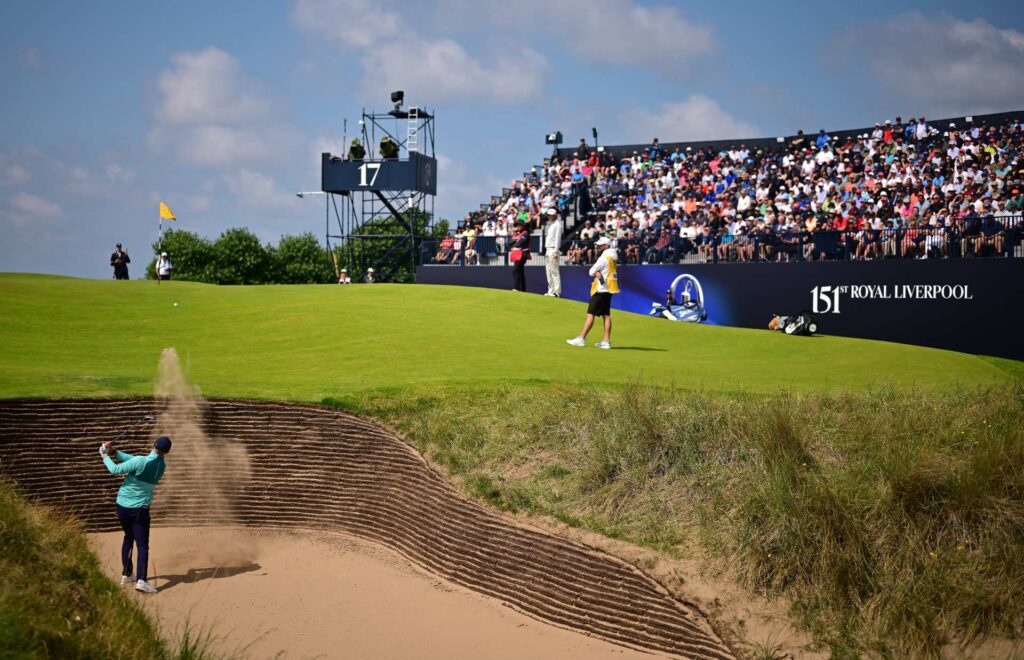
“I don’t know who’s annoyed the greenkeeper,” said Matthew Jordan, who may be getting a call from Links Manager James Bledge, given he’s a Hoylake member.
But the home favourite did give a glimpse why the Hoylake bunkers were proving just so tough. They’re playing flat at the bottom.
What difference does that make? If they enter at any pace, there’s nothing to stop the ball. No upslope. They just run right to the edge of the revetted face and stop.
Find enough of them, as Stewart Cink bluntly said, and “you’re going to end up getting hosed big time.”
“It’s heavily, heavily underrated how much of a difference that makes,” explained Richie Ramsay. “If there’s an element of rise at the bottom of the face, it works twofold.
“If the ball goes up, it’s obviously giving you loft straight off the back, but when the ball comes down it obviously will feed in more into the middle of the bunker.
“I got caught today on one sort of leg, knee up on the side. It’s just part of links golf. You’ve got to take it on the chin.
“But you’re very wary of hitting into a bunker knowing that you could be like a foot from the face with seven feet in front of you.
“So you’re going to see a lot of guys, maybe right up against the face trying to hit it as hard as possible.”
The cost, Ramsay warned, could be massive. “I think over the course of a tournament, it’s worth at least an extra shot.”
That’s tens of thousands of pounds disappearing down the drain for those who can’t meet the challenge. Maybe the Claret Jug goes with it.
It’s tough for them, but a thrilling subplot for those of us spectating. Proper bunkers are back, and we should be all for it.
What do you think of the Hoylake bunkers? Let me know with a tweet.
Steve Carroll

A journalist for 25 years, Steve has been immersed in club golf for almost as long. A former club captain, he has passed the Level 3 Rules of Golf exam with distinction having attended the R&A's prestigious Tournament Administrators and Referees Seminar.
Steve has officiated at a host of high-profile tournaments, including Open Regional Qualifying, PGA Fourball Championship, English Men's Senior Amateur, and the North of England Amateur Championship. In 2023, he made his international debut as part of the team that refereed England vs Switzerland U16 girls.
A part of NCG's Top 100s panel, Steve has a particular love of links golf and is frantically trying to restore his single-figure handicap. He currently floats at around 11.
Steve plays at Close House, in Newcastle, and York GC, where he is a member of the club's matches and competitions committee and referees the annual 36-hole scratch York Rose Bowl.
Having studied history at Newcastle University, he became a journalist having passed his NTCJ exams at Darlington College of Technology.
What's in Steve's bag: TaylorMade Stealth 2 driver, 3-wood, and hybrids; TaylorMade Stealth 2 irons; TaylorMade Hi-Toe, Ping ChipR, Sik Putter.


